Baghdad, the capital of Iraq, has been around for 1,200 years with rich history and culture that played a significant role in shaping the history and culture of the region. Here are some of the places of interest for tourists to visit in Baghdad:
The National Museum of Iraq
This museum showcases the ancient history and art of Mesopotamia, including artifacts from the Sumerian, Babylonian, and Assyrian civilizations. It is dedicated to protecting archaeological heritage of Iraq from loss or destruction. One of the more amazing museums around showcasing artifacts from early settlements (dating back to 5,000 years) to the rise and fall of vast empires.
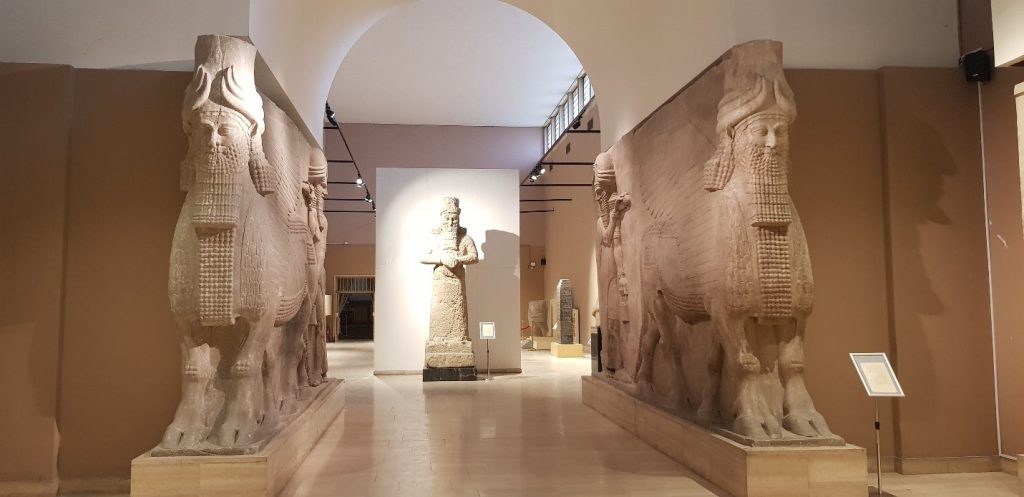
The Tigris River
The Tigris River is 1,900 kilometers (1,180 miles) long; begins in the mountains of eastern Türkiye, touches the north-east of Syria, before flowing through Iraq where it joins the Euphrates River in the south-east becoming the Shatt Al-Arab River. The Tigris River runs through Baghdad and offers a peaceful escape from the busy city. There are parks and restaurants along the river where visitors can relax and enjoy the views.
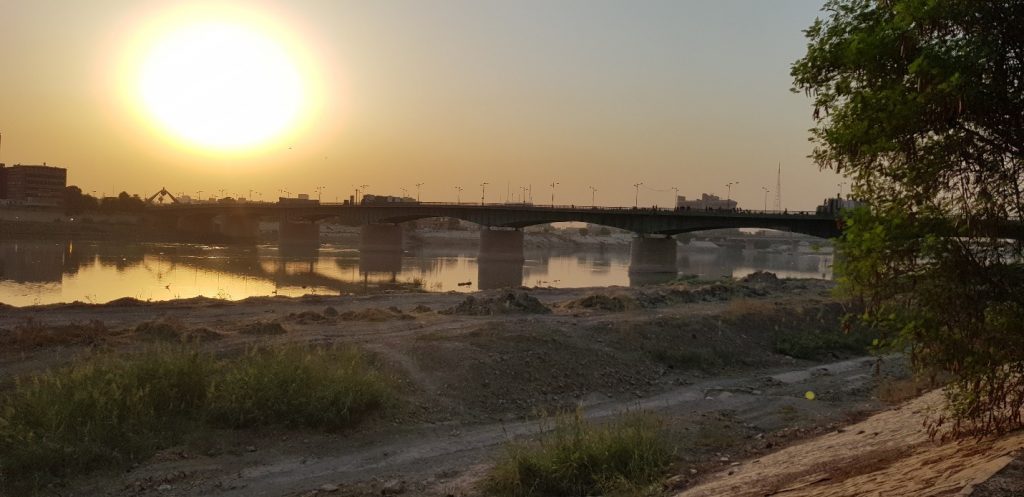
The Al-Shaheed Monument
The Al-Shaheed Monument also known as the Martyrs Monument, honours the victims of the Iraq-Iran War, and is a symbol of Iraqi resistance and independence. The Monument was completed in 1983 and consists of two halves of a split 40 meter (131 feet) tall turquoise dome with an eternal flame in the centre.
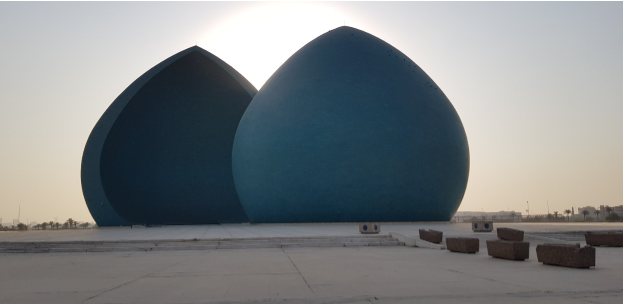
Mutanabbi Street
Historic center for literacy and intellectual community, named after 10th century poet Al-Mutanabbi, whose statue is at the end of the street near the Tigris River. Mutanabbi Street developed a rather bad reputation after a suicide car bomb in March 2007, which destroyed historic coffeehouse Shahbandar Café, and four of the owner’s sons. The owner has rebuilt the café which is a famous meeting place for intellectuals, artists, teachers, philosophers, and politicians. Photos hanging on its walls show glimpses of Iraq’s history, and the Café welcomes everyone.
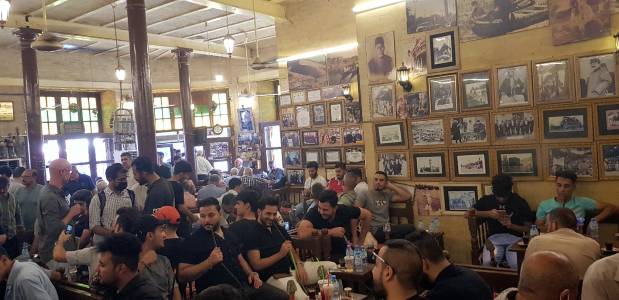
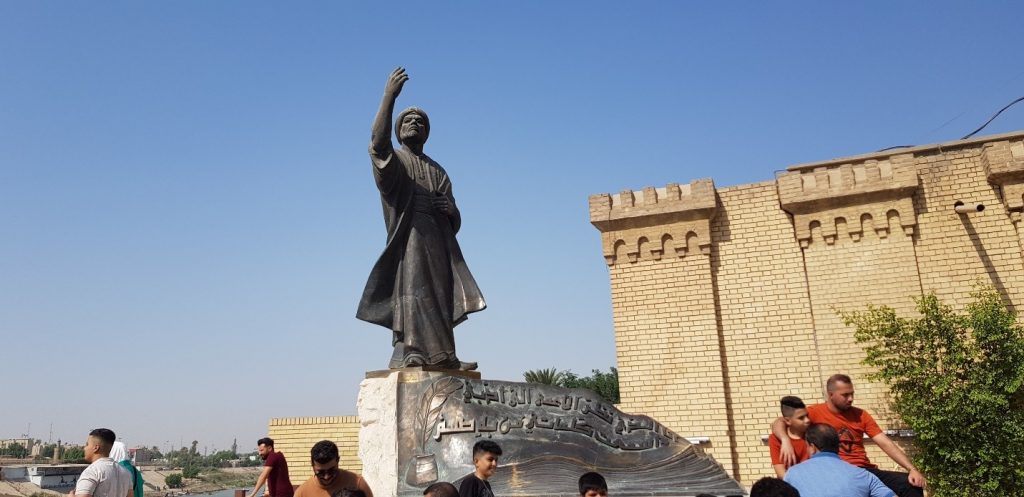
Tahrir Square
Tahrir Square is a large central plaza, also known as Liberation Square located in the heart of Baghdad. The Freedom Monument located here depicts the historic event of ‘14 July Revolution’ leading to establishment of the Republic of Iraq in 1958.
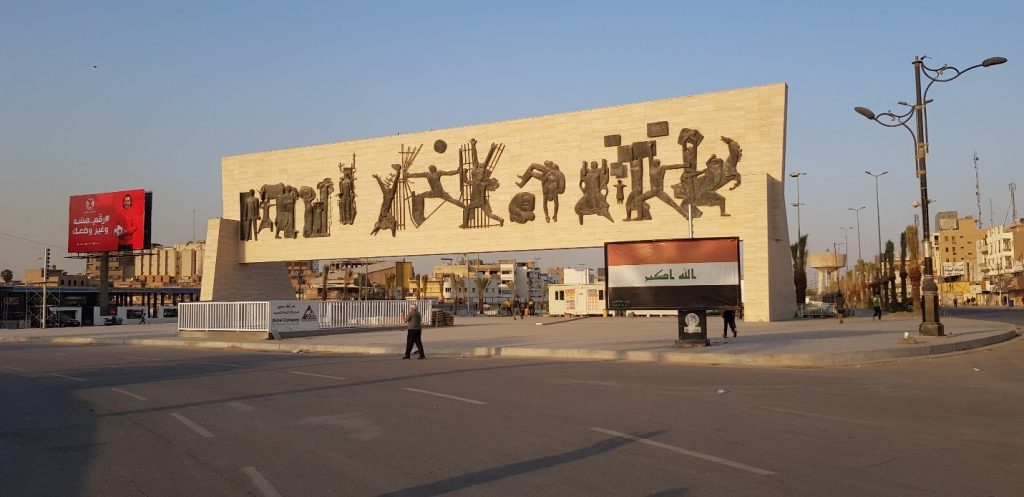
Firdos Square
Firdos Square (named after the Arabic word ‘Firdows’ meaning paradise)is a public square famous for being the location where the statue of Saddam Hussein was pulled down by U.S. military forces and Iraqis on 9th April 2003, during the 2nd Gulf War. The event was widely broadcasted by international media and became a symbol of the end of Saddam Hussein’s regime.
Firdos Square with Ramadan Mosque in background. YPT’s Gulliver imitating Saddam Hussein at the exact spot where his statue stood
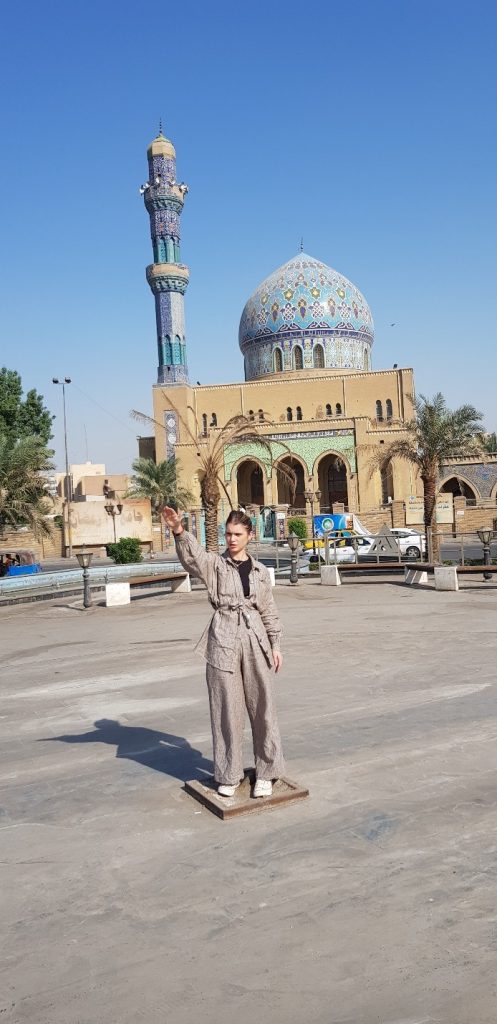
Sheikh Maruf Karkhi Mosque
Sheikh Maruf Karkhi Mosque shrine of Sheikh Maruf Karkhi, a pivotal figure in Sufism who died in 815 CE. The renovated Mosque contains a very large prayer hall and a small basement room with Sheikh Maruf Karkhi’s grave.
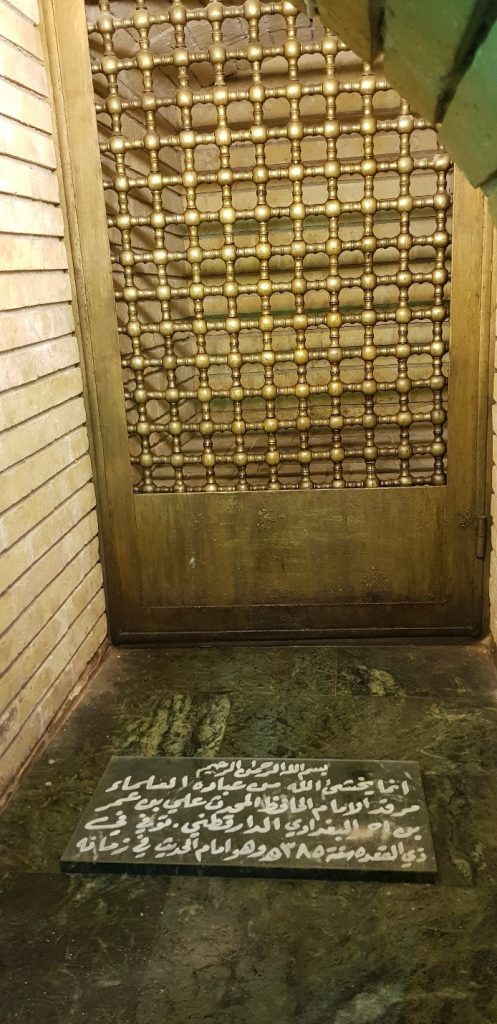
Taq Kasra
Taq Kasra world’s largest 1,400 year old arch, also known as the Arch of Ctesiphon, is the only remaining structure from the ancient city of Ctesiphon (located 30 kilometers (19 miles) south of Baghdad). The arch was built as part of a palace complex and at 37 meters (122 feet) tall and 48 meters (158 feet) long, it is the largest brick-built arch in the world. The Arch is closed to the public due to restoration work.
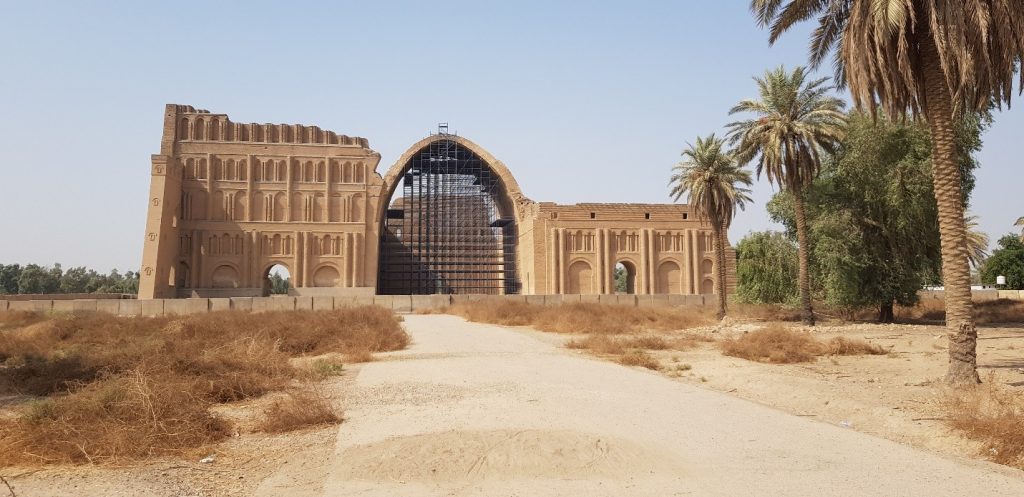
Victory Arch
Victory Arch an arch consisting a pair outstretched hands holding crossed swords opened in August 1989 to commemorate the Iran-Iraq War. The hands are based on plaster casts of Saddam Hussein’s hands. Each sword is 140 meters (459 feet) long, and the arch is also known as Swords of Qādisīyah.
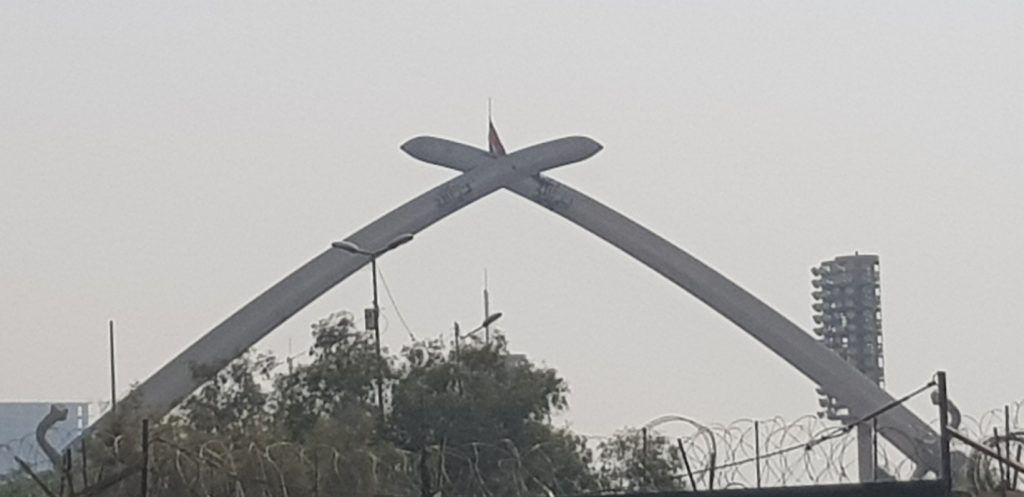
Save Iraqi Culture Monument
Save Iraqi Culture Monument commissioned in 2010, it is a cylindrical column of broken stone representing the fall of Iraqi culture. The five hands and arms show an attempt to support the falling stone to prevent it from falling.
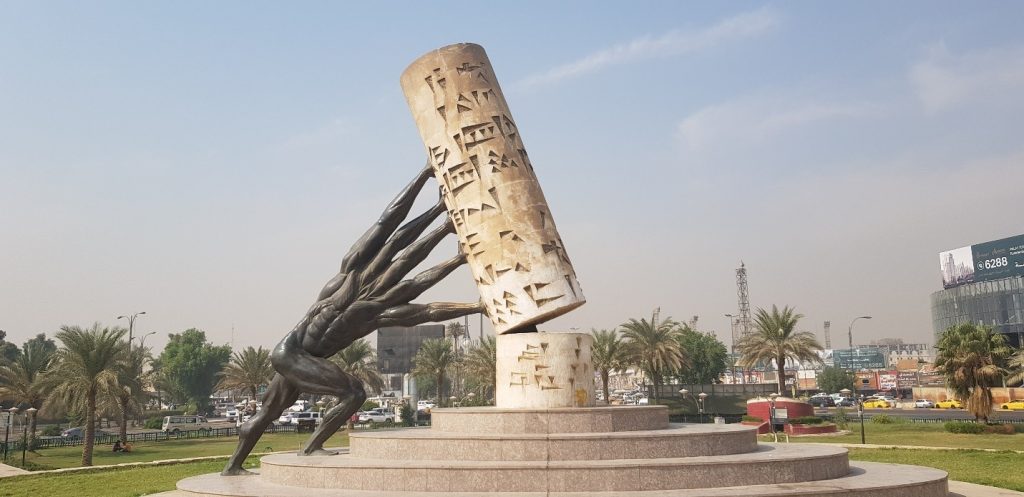
Tomb of Joshua the High Priest
Tomb of Joshua the High Priest Joshua was chosen to be the High Priest to rebuild King Solomon’s Temple after the return of the Jewish people from ‘Babylonian Captivity’ (where King Nebuchadnezzar II forcibly moved people from Judah [Jerusalem] to live in Babylon).
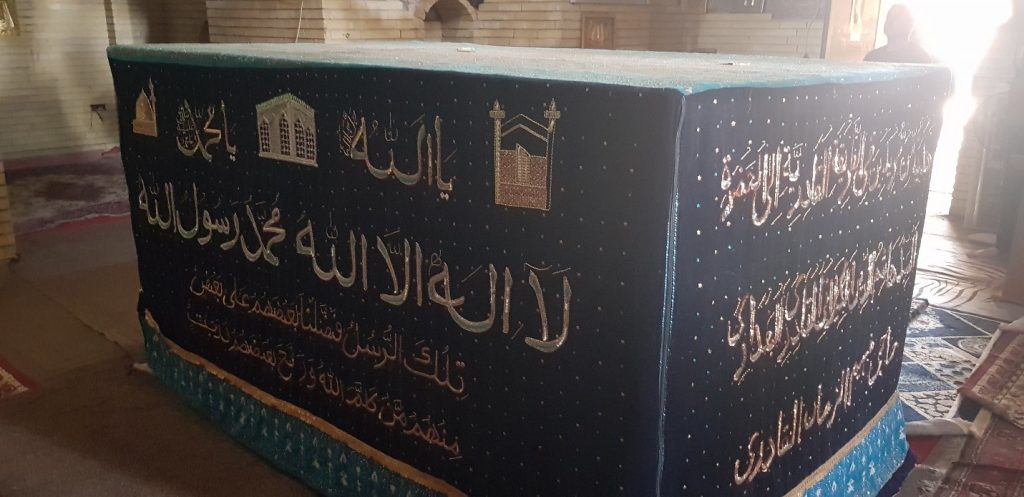
Shrine of Junayd Baghdadi
A Persian mystic and was an important figure in the development of Sufi doctrine.

Besides the historical and cultural significance, architectural wonders, and museums, Iraqi cuisine is known for its delicious and unique flavors with local dishes such as biryani, kebab, and falafel Bottom of Form . Iraqi people are known for their hospitality and warmth towards visitors. They are always happy to welcome visitors to their city and share their culture and traditions.
For further information on tours to Iraq, click here.





